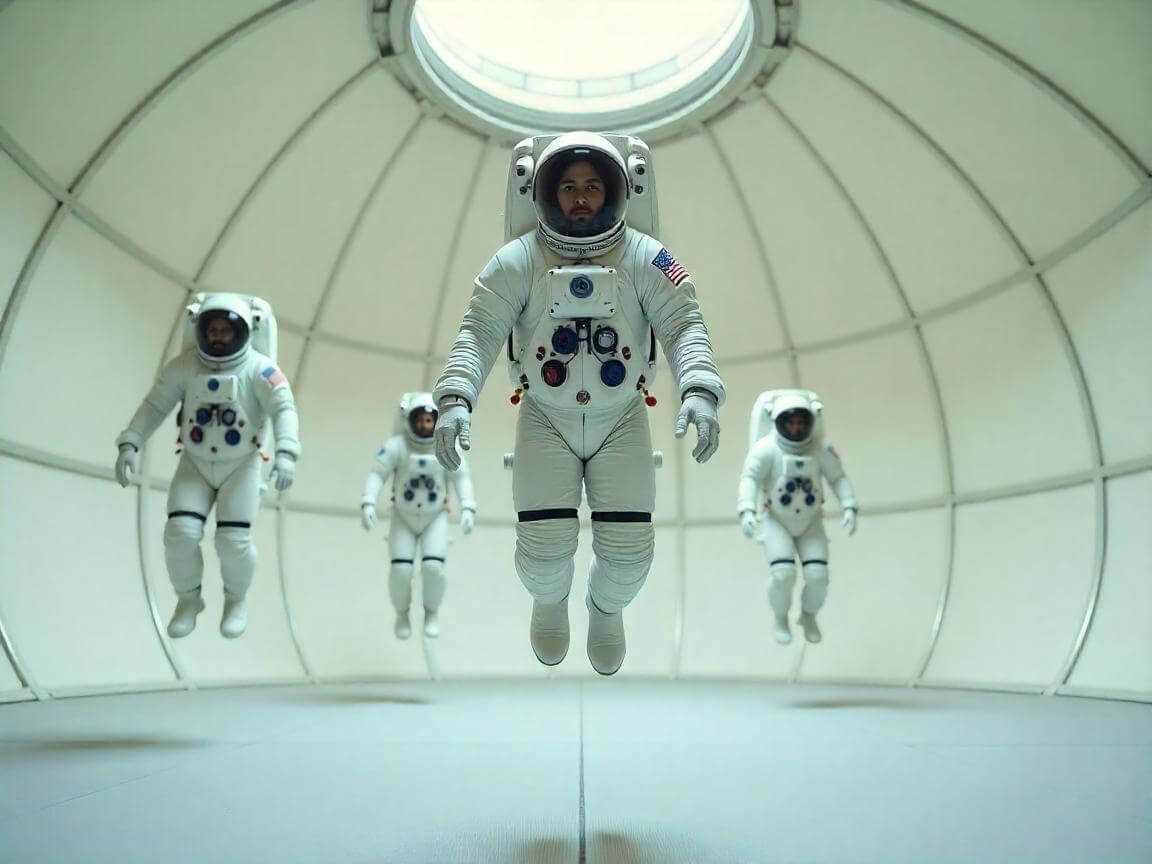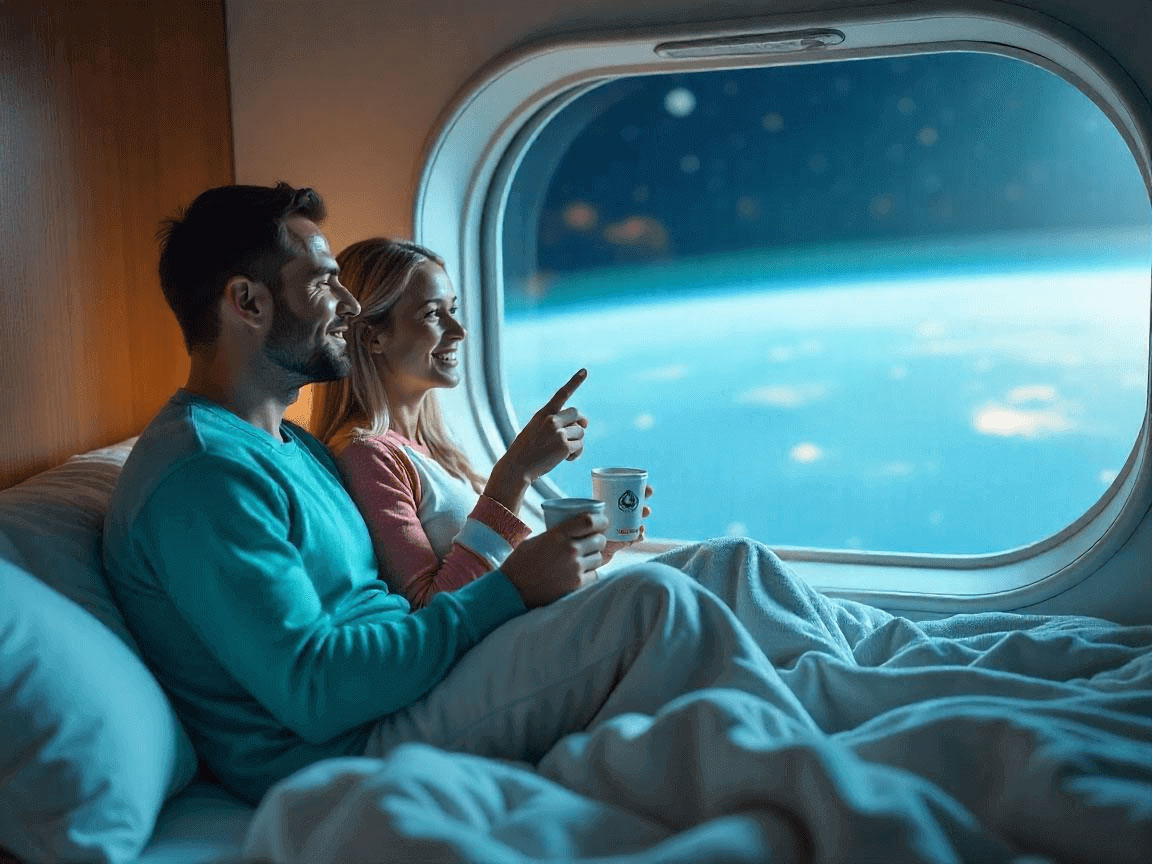Since Yuri Gagarin first orbited Earth in 1961, space has remained a domain reserved for trained astronauts, military missions, and scientific exploration. For decades, the dream of ordinary people venturing into space felt firmly rooted in science fiction. Today, that dream is edging closer to reality. Space tourism—once a fantastical idea—is now within grasp, powered by the convergence of cutting-edge engineering, sophisticated software development, and visionary entrepreneurship.
The evolution of space tourism is not just a story of rockets and capsules; it is a testament to how advances in technology, cloud computing, data analytics, and artificial intelligence (AI) are turning the final frontier into a new destination for adventurous travelers. In this blog, we explore the role of software and technology in shaping the space tourism industry, the key players involved, the requirements for future space tourists, and what lies ahead for this pioneering sector.
The Role of Software and Technology in Space Tourism
Modern spaceflight is fundamentally a software-driven enterprise. Without precision software systems, the immense complexities of space travel—navigation, propulsion, life support, communication—would be insurmountable.
Here’s how software technology is making space tourism a reality:

1. Flight Navigation and Control Systems
Spacecraft navigation relies on advanced onboard software capable of real-time decision-making. Autonomous guidance, navigation, and control (GNC) systems calculate position, orientation, speed, and trajectory, ensuring smooth and safe flights. SpaceX’s Crew Dragon capsule, for instance, uses sophisticated flight computers running fault-tolerant software systems that can operate even when hardware failures occur.
2. Simulation and Training Software
Training future tourists requires realistic, immersive simulations. Virtual reality (VR) and augmented reality (AR) platforms simulate zero-gravity environments, spacecraft operations, and emergency protocols. Companies like Blue Origin use advanced simulators that replicate every aspect of the journey, giving passengers a true-to-life experience well before they launch.
3. AI and Predictive Analytics
AI models predict equipment performance, optimize launch conditions, and monitor astronaut (and now tourist) health. Machine learning algorithms help forecast weather windows, assess rocket reusability, and fine-tune mission parameters. Predictive maintenance powered by AI ensures that reusable spacecraft like Virgin Galactic’s SpaceShipTwo remain safe after each flight.
4. Secure Communication Systems
From launch to reentry, tourists must maintain secure and stable communication with ground teams. Satellite communication protocols, encrypted data transmission, and redundant network architectures all ensure seamless, real-time interaction.
5. Customer Experience Software
Booking a seat to space is becoming as easy as booking a flight—thanks to tailored CRM (Customer Relationship Management) systems, online booking platforms, and personalized training schedules managed through enterprise-grade software solutions. Virgin Galactic’s online portal offers scheduling, medical checks, payment systems, and customer service in an integrated digital experience.
Key Players in the Space Tourism Industry
The space tourism industry is emerging as a vibrant field with multiple competitors aiming to dominate the skies:
- SpaceX: Led by Elon Musk, SpaceX aims for more than suborbital joyrides. With the Inspiration4 mission in 2021, it sent an all-civilian crew into orbit. Musk envisions future tourist trips to the Moon and Mars.
- Blue Origin:Jeff Bezos’ company offers suborbital flights on its New Shepard rocket, giving passengers a few minutes of weightlessness and Earth views from above the Kármán line (the boundary of space at 100 kilometers).
- Virgin Galactic: Richard Branson’s company targets space tourism with its SpaceShipTwo spacecraft, providing a few minutes of microgravity and breathtaking views of Earth during parabolic flights.
- Axiom Space: Focused on building the world’s first commercial space station, Axiom offers orbital trips with trained astronauts as guides, expanding the reach of space tourism beyond Earth’s atmosphere.
Each of these companies uses proprietary technology stacks, custom-built software solutions, and advanced flight operations centers to manage missions.
Building Software for Space Tourism: What’s Under the Hood?
A peek into the software stack for a space tourism company:
| Layer | Technologies Used |
|---|---|
| Frontend | React, Vue.js, Flutter for user portals |
| Backend | Node.js, Python, GoLang for mission-critical APIs |
| Cloud & Hosting | AWS, Azure Space, Google Cloud |
| DevOps | Docker, Kubernetes, Terraform |
| Simulation Engines | Unity 3D, Unreal Engine, NVIDIA Omniverse |
| Analytics & AI | TensorFlow, PyTorch, Apache Spark |
| Security Layer | Zero-trust, AES-256, Blockchain, MFA |
Preparing Passengers: Software in Training & Readiness
Unlike astronauts who train for years, space tourists undergo accelerated training programs, enabled by software.
Biometric Health Monitoring
Wearables and sensor arrays feed into health monitoring software that tracks:
- Heart rate variability
- Blood oxygen levels
- Stress indicators
- Body temperature
Data is fed into dashboards powered by platforms like Grafana or InfluxDB, alerting flight trainers or physicians if thresholds are exceeded.
VR/AR for Experiential Training
Virtual Reality offers realistic, risk-free training simulations:
- Zero gravity floating
- Emergency landing drills
- Communication protocols
- Suit-up routines
AR glasses overlay step-by-step guides during real equipment handling, reducing reliance on traditional instruction.
Used platforms:
- Microsoft HoloLens
- Unity XR
- OpenXR SDKs
These tools deliver an intuitive training pipeline that compresses months of astronaut instruction into days.
Training the Next Generation of Space Tourists
Unlike professional astronauts who undergo years of intense preparation, space tourists receive condensed, yet critical, training programs to prepare for the unique environment of space:

Technical Aspects:
- Pre-Flight Physical Assessment: Passengers undergo medical evaluations using diagnostic software systems that assess cardiovascular health, respiratory function, and neurological fitness. Predictive health algorithms help flag risks early.
- Zero-Gravity Training: Simulators and parabolic flight (“vomit comet”) experiences familiarize tourists with the disorienting sensation of weightlessness. Simulation software accurately mimics spacecraft behavior to aid in training.
- Emergency Preparedness: Using VR modules and gamified learning environments, tourists learn evacuation drills, how to use safety gear, and basic spacecraft operations.
- Psychological Preparation: Behavioral analytics software monitors mental readiness, ensuring participants can handle isolation, confined spaces, and the emotional impact of seeing Earth from above.
Training typically lasts between 3 days to 6 months, depending on mission complexity (suborbital vs. orbital).
The Cost of Traveling to Space
Today, space tourism remains an expensive venture—out of reach for most, but costs are steadily declining thanks to reusable technology and innovation.
Cost Breakdown:
| Company | Type of Flight | Estimated Cost per Ticket |
|---|---|---|
| Virgin Galactic | Suborbital (~90 mins) | $450,000 |
| Blue Origin | Suborbital (~11 mins) | $200,000 – $500,000 |
| SpaceX | Orbital (3–5 days) | ~$55 million |
Advanced software systems that optimize launch efficiency and spacecraft reuse (e.g., Falcon 9 boosters) are critical drivers behind lowering these astronomical prices.
Flight Duration and Experience
Suborbital Flights:
- Last from 11 to 90 minutes
- Experience weightlessness for about 4–5 minutes
- View the curvature of the Earth
- Return to Earth without orbiting it
Orbital Flights:
- Span several days
- Circle Earth at speeds of ~17,500 mph (28,000 km/h)
- Involve docking with space stations (e.g., ISS) or free-flying orbital journeys
- Require advanced life support systems, orbital navigation, and radiation shielding—all managed through highly complex onboard software.
Technical Challenges and Software Innovations
- Radiation Protection: Cosmic radiation remains a risk for space travelers. Machine learning models are helping engineers design better shielding materials and monitor exposure levels in real time.
- Life Support Systems: Closed-loop life support systems track oxygen levels, CO₂ scrubbers, temperature, and humidity—all regulated automatically by sensor-driven software platforms.
- Flight Reusability: Software-driven systems allow rockets like Falcon 9 to land themselves autonomously—a monumental achievement lowering the cost of access to space.
- Regulatory Compliance: Space tourism companies must comply with emerging regulations set by the FAA, NASA, and international bodies. Software tools manage documentation, compliance auditing, and reporting in highly dynamic regulatory environments.
The Future of Space Tourism
The next decade holds thrilling possibilities:
- Luxury Space Hotels: Companies like Orbital Assembly Corporation plan to build rotating space stations simulating gravity for longer stays. Software-controlled robotics will build these structures in orbit.
- Moon Tours: SpaceX’s Starship project aims for lunar flybys, offering tourists multi-day experiences around Earth’s only natural satellite.
- Interplanetary Tourism: The ultimate goal: enabling civilians to visit Mars. This will require quantum leaps in propulsion technology, AI-driven autonomous habitat management, and sophisticated onboard software for years-long missions.
The Human Touch: Why This Matters
While the headlines often glorify the billionaires and rockets, it’s important to remember the human desire behind this movement—curiosity, exploration, and the yearning to look back at Earth from the vastness of space.
Software is making that moment possible—not by replacing humanity, but by augmenting its reach, ensuring that civilians, scientists, and dreamers alike can explore the stars safely, smartly, and spectacularly.
The Road Ahead: Trends Shaping Space Tourism
What’s Coming Next?
- 1. Space Hotels: Orbital Assembly Corp’s Voyager Station is targeting 2027–2030 launch, with suites booked via online portals.
- 2. SaaS for Spacecraft: Subscription models for data services, equipment diagnostics, and crew management tools.
- 3. AI Copilots: Advanced NLP and decision-support systems integrated into cockpits for emergency management.
- 4. Edge Computing: Local data processing on spacecraft using embedded AI chips, reducing latency.
- 5. Environmental Simulators: Ground-based software testing microgravity’s effect on different biological or engineering systems.
Conclusion: From Code to Cosmos
Space tourism stands at the intersection of humanity’s timeless desire for exploration and our modern prowess in technology and software innovation. While the path from the Apollo era to today’s tourist-driven missions reflects incredible engineering feats, it is the invisible architecture of software—quietly monitoring, guiding, and protecting—that makes this new era possible.
It is no longer just a physical challenge—it’s a software engineering marvel. Every milestone in this new industry is made possible by the silent code running simulations, processing data, managing systems, and connecting humans to the stars.
At its heart, space tourism is a tribute to both human curiosity and the power of digital transformation. As software continues to evolve—incorporating advances in AI, quantum computing, and blockchain for mission security—the dream of accessible space travel inches ever closer for all.
As we move into a future where civilian space travel becomes mainstream, the role of software will only grow. Whether it’s managing orbital itineraries or guiding lunar landings, the future of tourism is not just among the stars—but inside the systems that make it happen.












